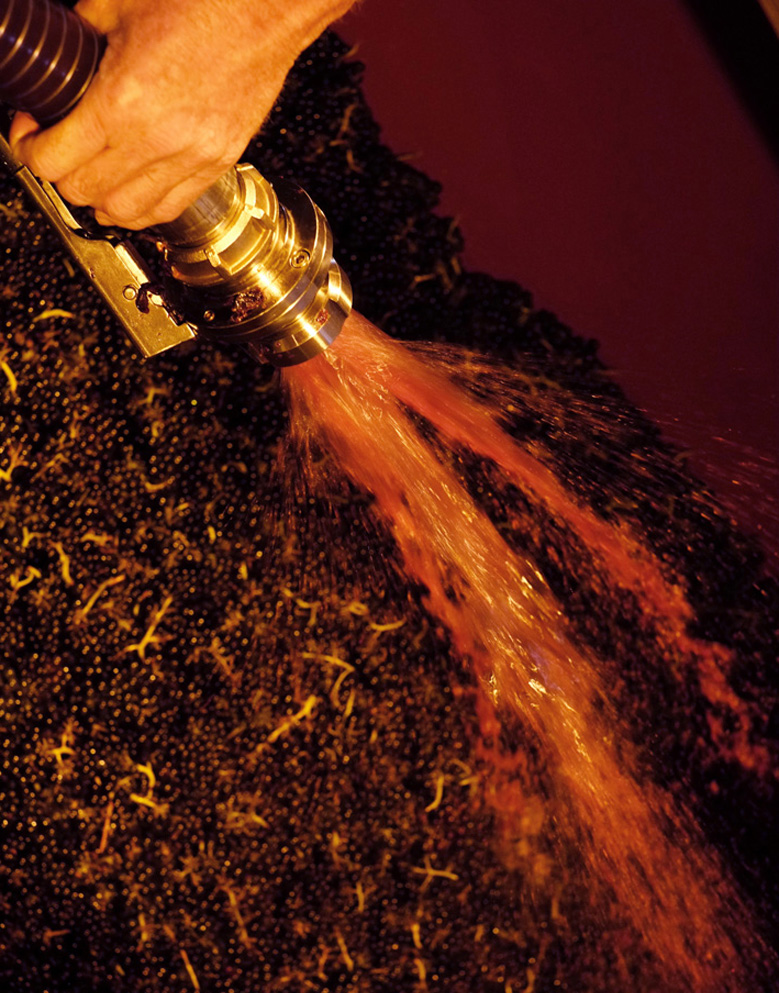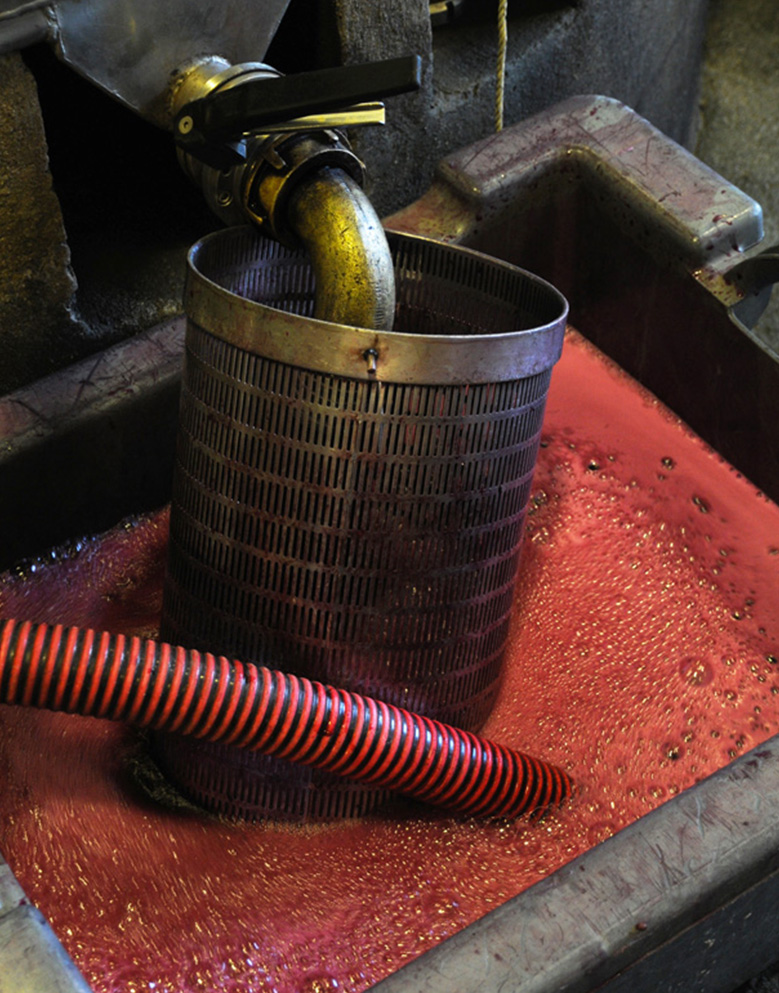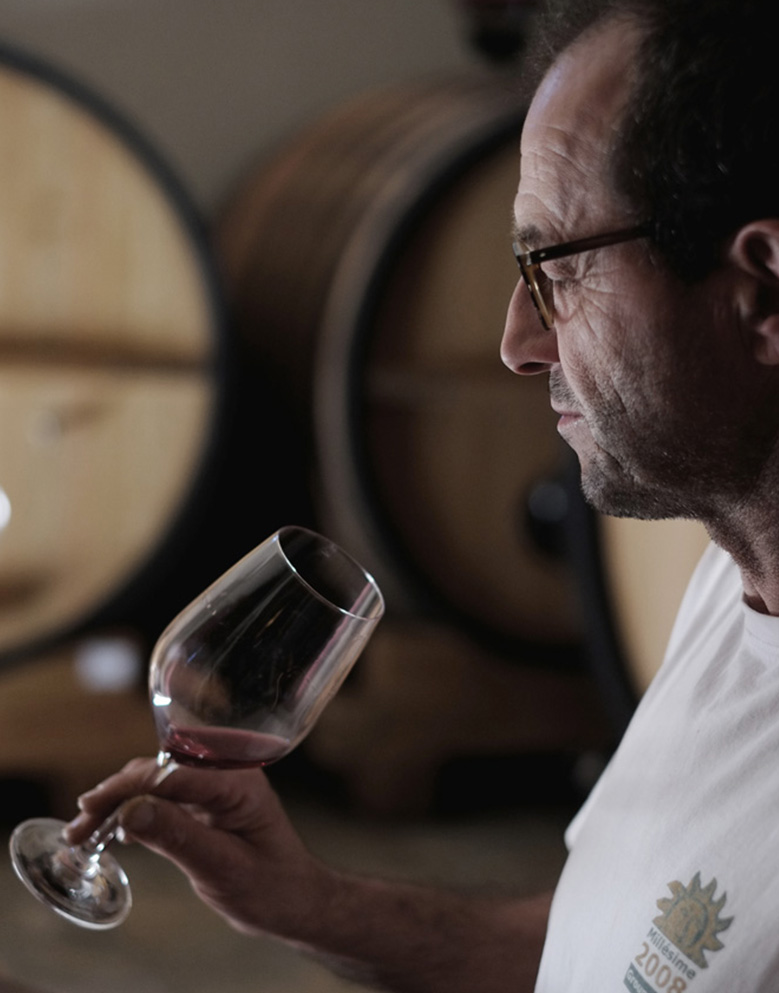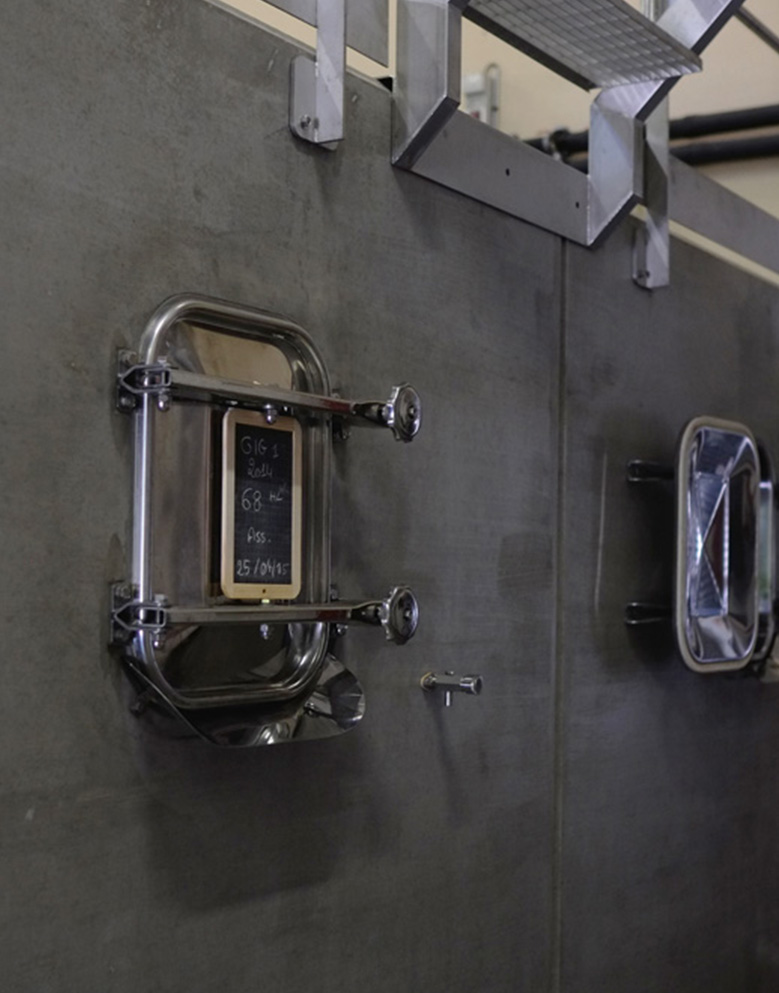In 2010, we upgraded the cellar with technology that allows us to chill down the tanks. When I decided to do a pre-fermentation cold maceration, for four to five days at 13°C, I was able to capture more of fresh fruit’s purity of flavor. I choose only to do a cold maceration, however, but I don’t ferment at equally low temperatures. When you bring out the primary character of the fruit, the true fruit of the grape, even when the wine’s alcohol is elevated, for example, the pure fruit tempers it. The character of the soil then returns after five to six years of aging.
The wines of the 2012 vintage, for example, topped out at 15 degrees alcohol, thus it is necessary to enjoy these wines at lower temperatures (13°C to 15°C) — but because of the pure fruit, there is no “warm” alcoholic sensation, no flavors of overripe fruit, quite the opposite; the wines are refined and easy to drink. The Vacqueyras as well has improved its balance with cold maceration, and over time, these wines become quite Burgundy-like in flavor and aroma.
Since 2008, I have backed off on extractions, and as a result, my wines have gained in finesse. We now work the year’s harvest in small concrete tanks, punching down and pumping daily for eight to 10 days. Overall, the maceration period lasts a little over a month. Then we work the wines on their fine lees, which feeds them, giving them volume. We don’t rack the wines often, to maintain a maximum amount of carbon dioxide in the tank to protect the wines and thus avoid adding too much sulfur.



